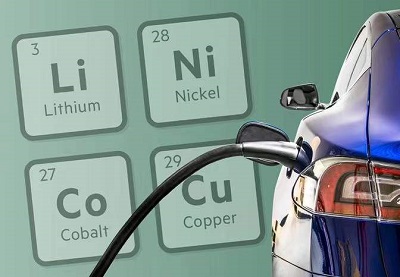In 2023, the lithium battery industry has entered a new cycle, With the sharp fluctuation of the price of lithium battery raw materials, the problem of overcapacity has begun to plague lithium battery material manufacturers.

Li-batteries & supporting metals
According to the data, from 2022 to 2023, the four main materials of lithium batteries, especially the anode materials and electrolyte, have shown overcapacity.
Affected by multiple factors, the growth rate of demand for new energy vehicles did not meet expectations.
In 2023, new energy vehicle companies launched several waves of price cuts, and as an industry leader, CATL also asked lithium battery material suppliers, including cathode materials and lithium carbonate, to reduce prices.
Under the pressure of inventory and cost, the capacity utilization rate of lithium battery materials enterprises has declined, and the capacity utilization rate of the four main materials has generally fallen below 60%.
Overcapacity pressure conduction
The overcapacity crisis has led to more fierce competition in the industry, bringing challenges to product prices, inventory, cash flow and other economies.
The high inventory of lithium battery materials in the first half of the year is a major problem. In order to reduce the existing inventory, the price war of different material links broke out.
In the first half of 2023, the price of cathode materials fell by more than 35%, the price of anode materials fell by more than 30%, the price of wet separators fell by more than 25%, and the price of electrolyte fell by more than 35%.
The business crisis caused by overcapacity is accelerating a new round of reshuffle in the industry.
When is the inflection point ?
The reasons supporting the growth of the lithium battery industry in this round are:
- Under the condition that the trend of new energy transformation is clearer and the industrial chain is more mature, the demand speed is accelerating;
- The overseas expansion of China’s lithium battery industry and the explosion of the energy storage application market have opened up a new growth curve for the lithium battery industry.
Behind the cyclical inflection point of the industry is actually the repair of the industry’s supply and demand market. At present, the repair of both supply and demand is quietly underway.
In September this year, the market share of new energy vehicles has reached 36.9%.
Integrated die-casting, CTP technology, and the development of new battery materials, the spot price of lithium carbonate has plummeted, and the cost of a single vehicle has been reduced.
Coping
Accelerating the layout of industrial integration is a means to resist market risks and strengthen the resilience of enterprises.
New technologies and new markets are the key to the development of incremental markets in the lithium battery industry.
The industrialization of lithium manganese iron phosphate materials and sodium-ion batteries is becoming more and more mature, and the new battery chemical system brings value-added space.
In addition, composite current collectors, silicon-based anodes, lithium-rich manganese-based, PAA binders and other subdivisions have driven the development of lithium batteries with high safety, high energy density and lightweight.
The energy storage market has continued to increase in recent years, and from 2022 to 2030, the demand for energy storage batteries will increase by nearly 8 times.
The export of electric vehicles and lithium batteries has hit a new high, and with a mature and complete industrial chain, Chinese material companies have a promising overseas market.





